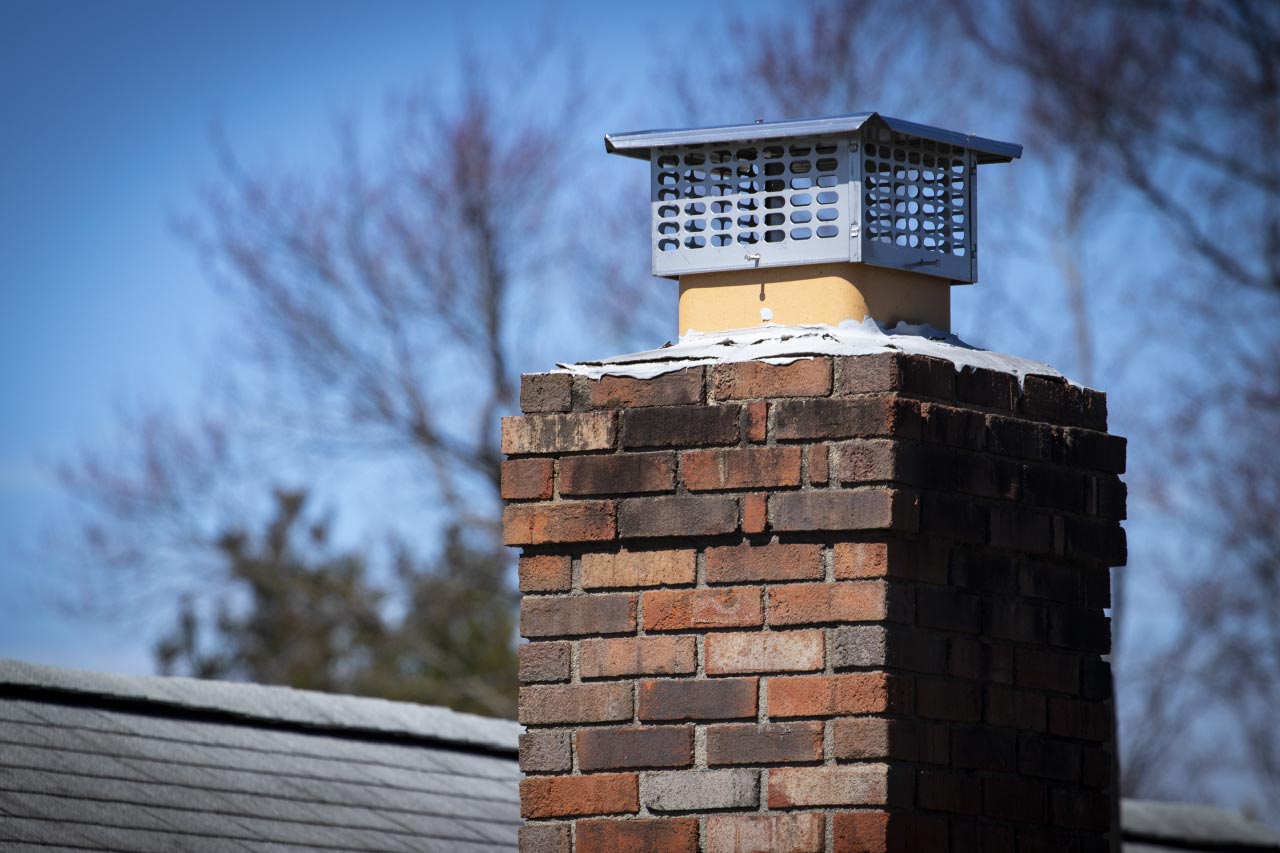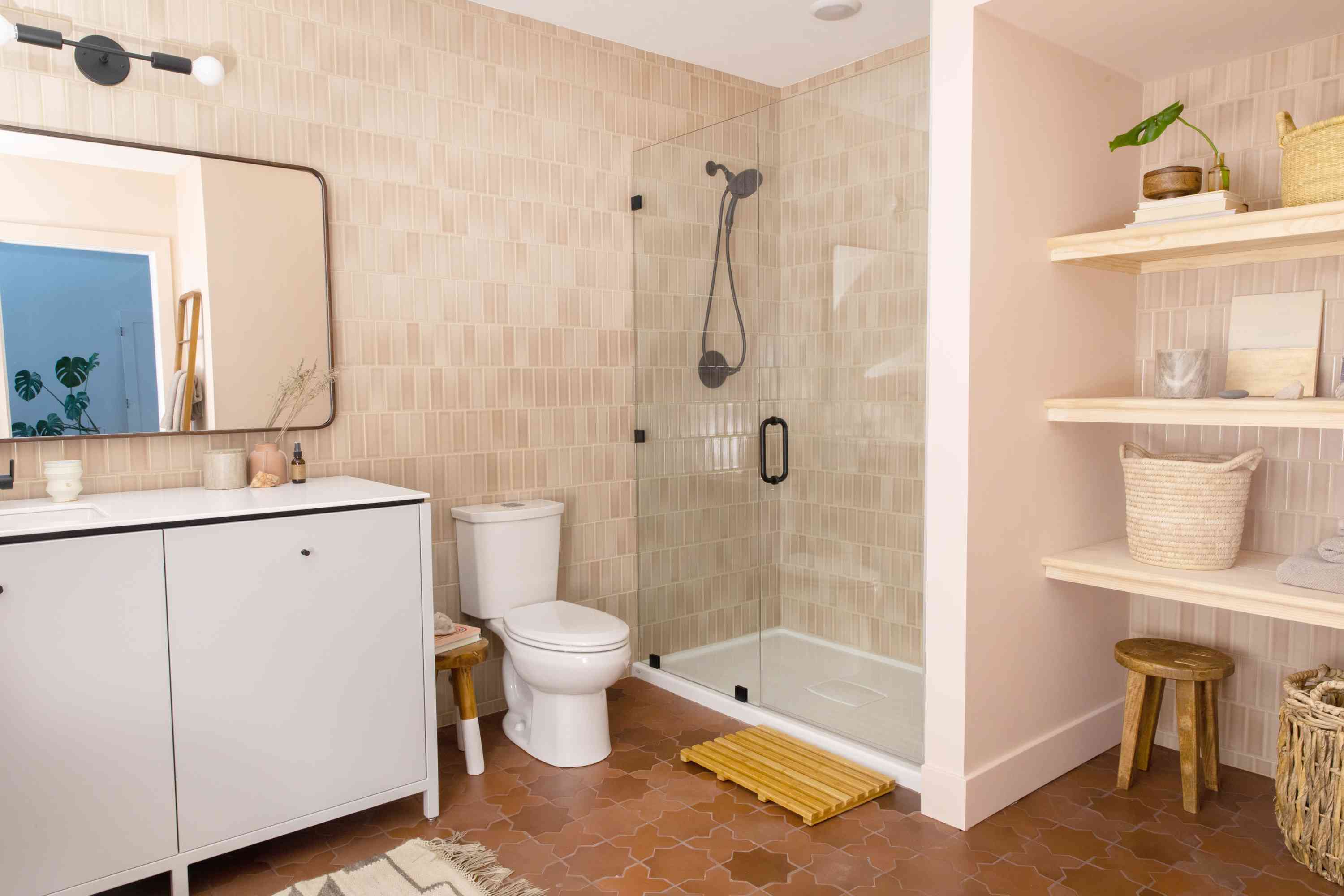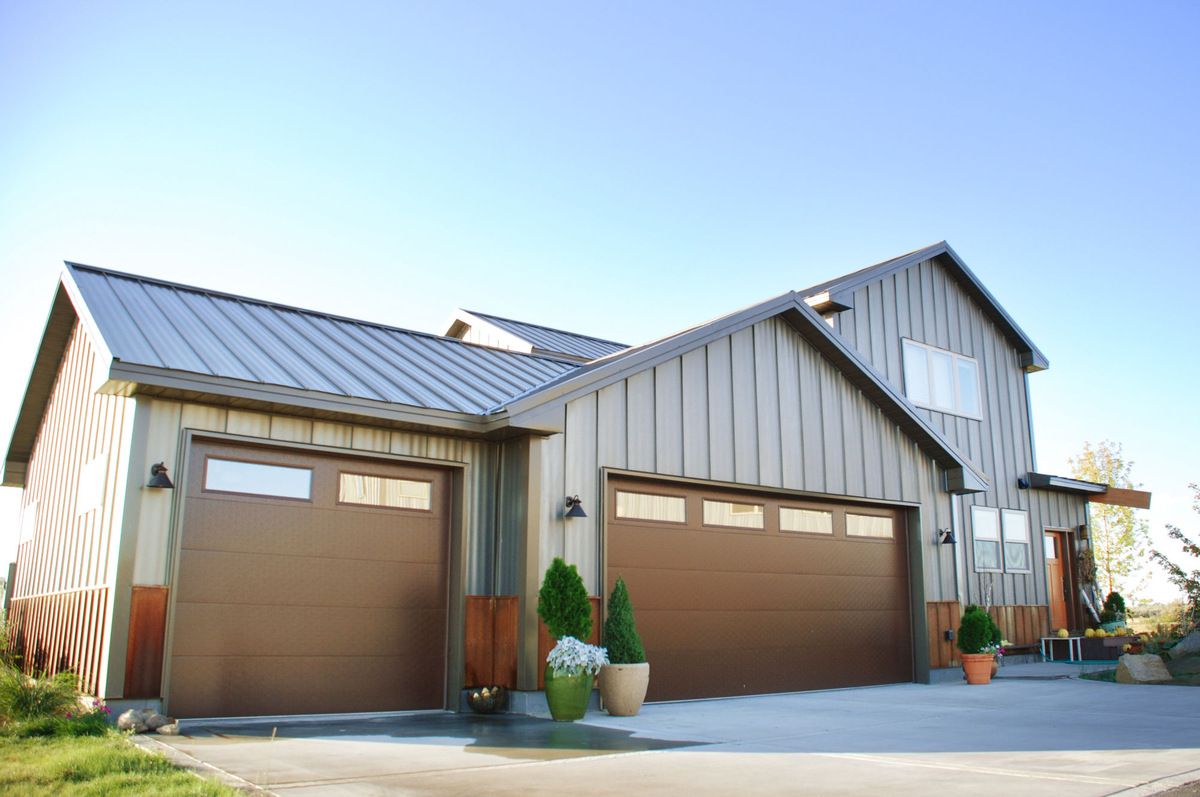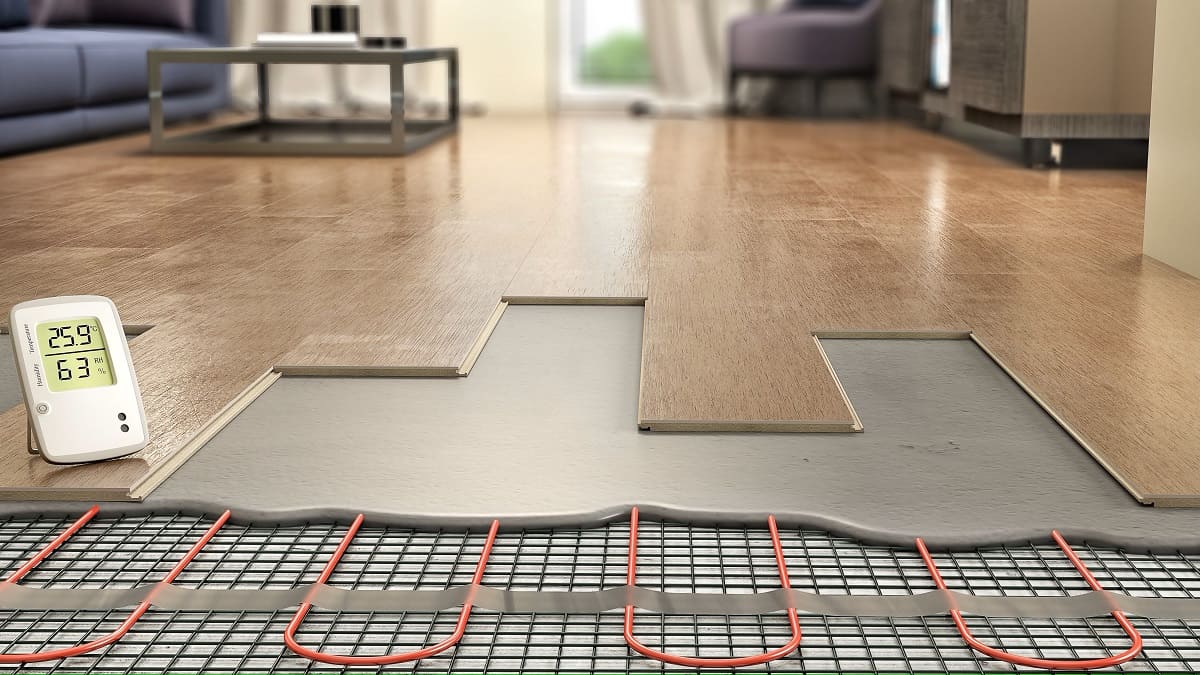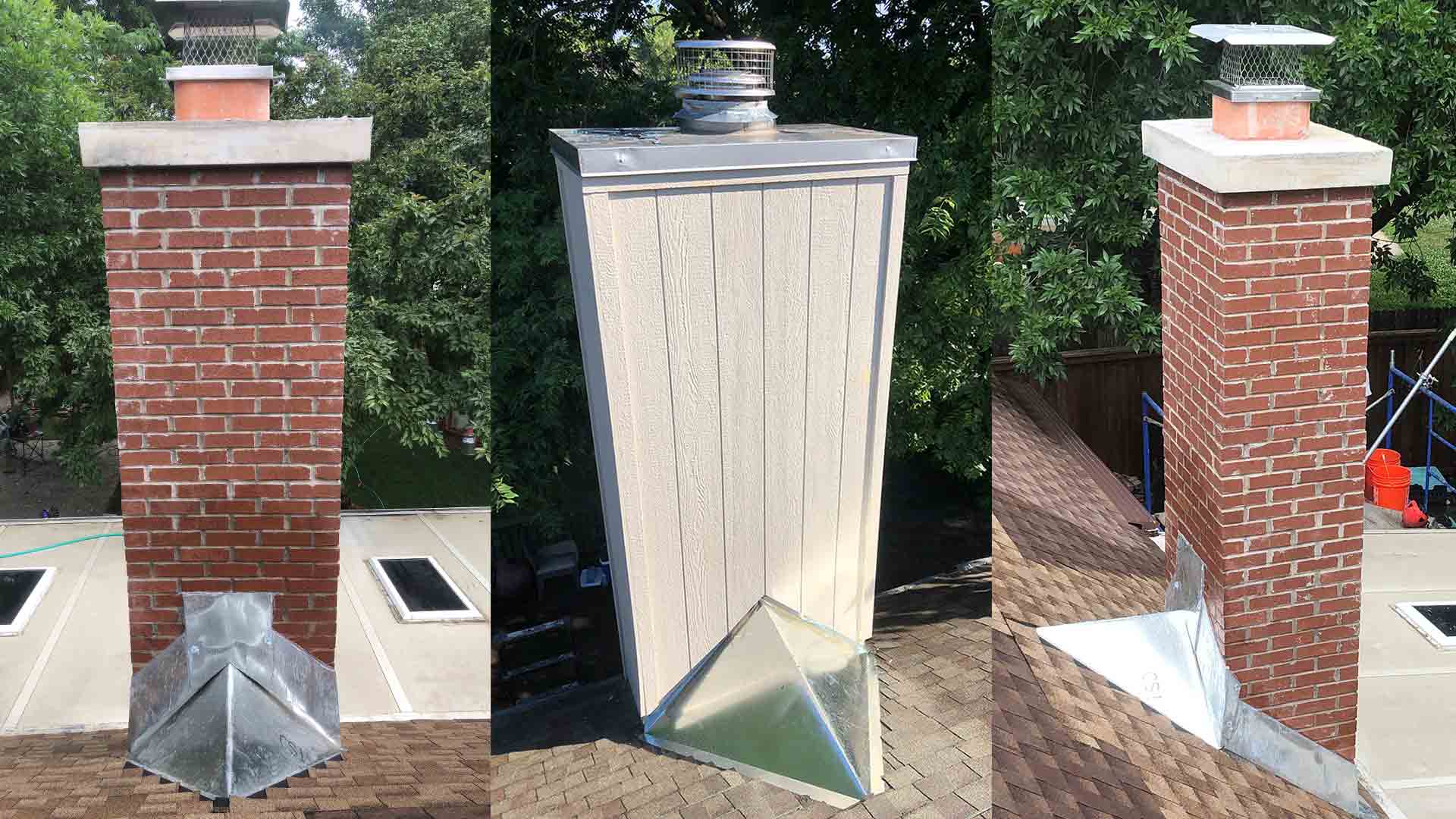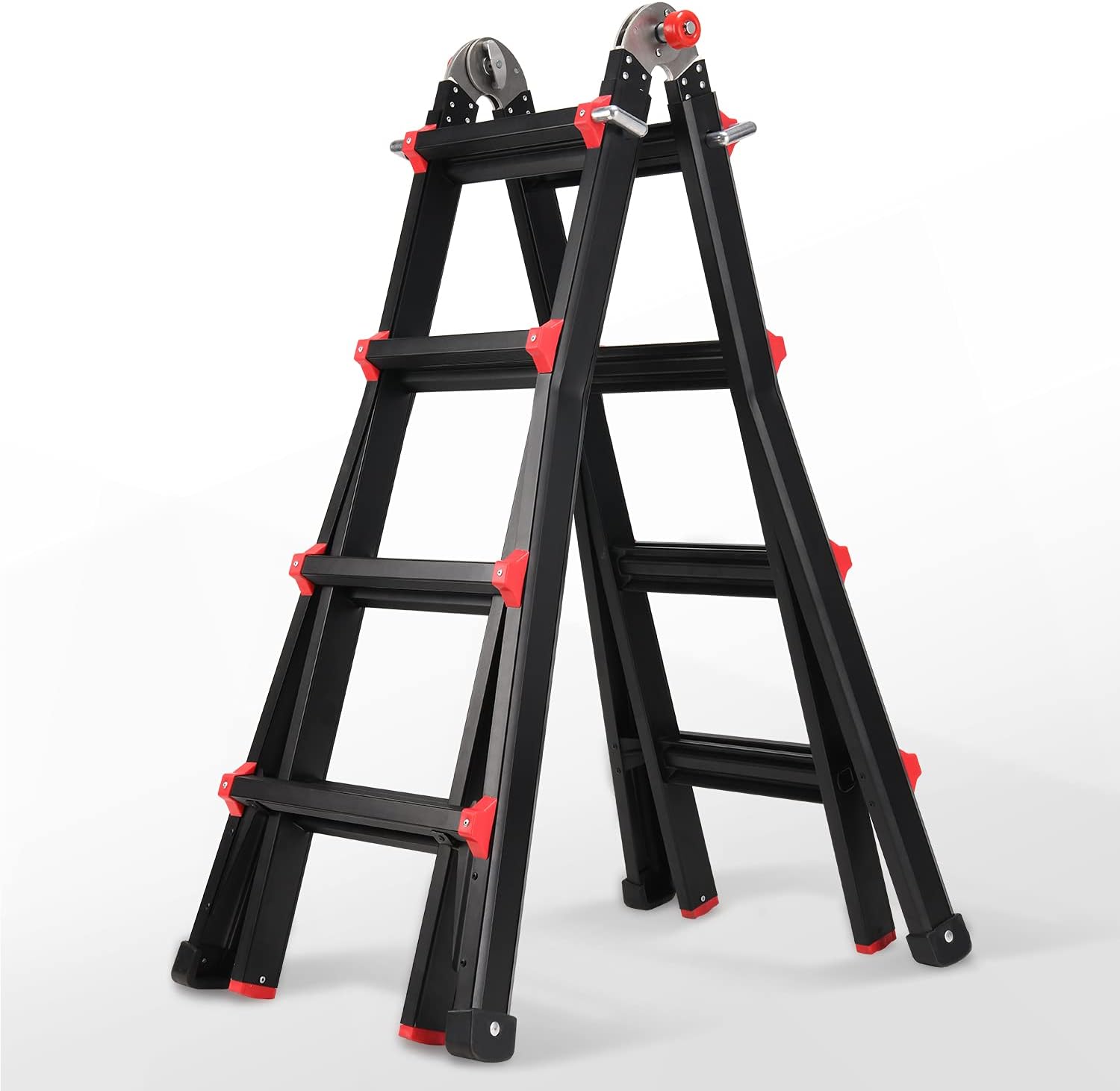Home>Home Maintenance>How Much Does Guitar Repair Cost
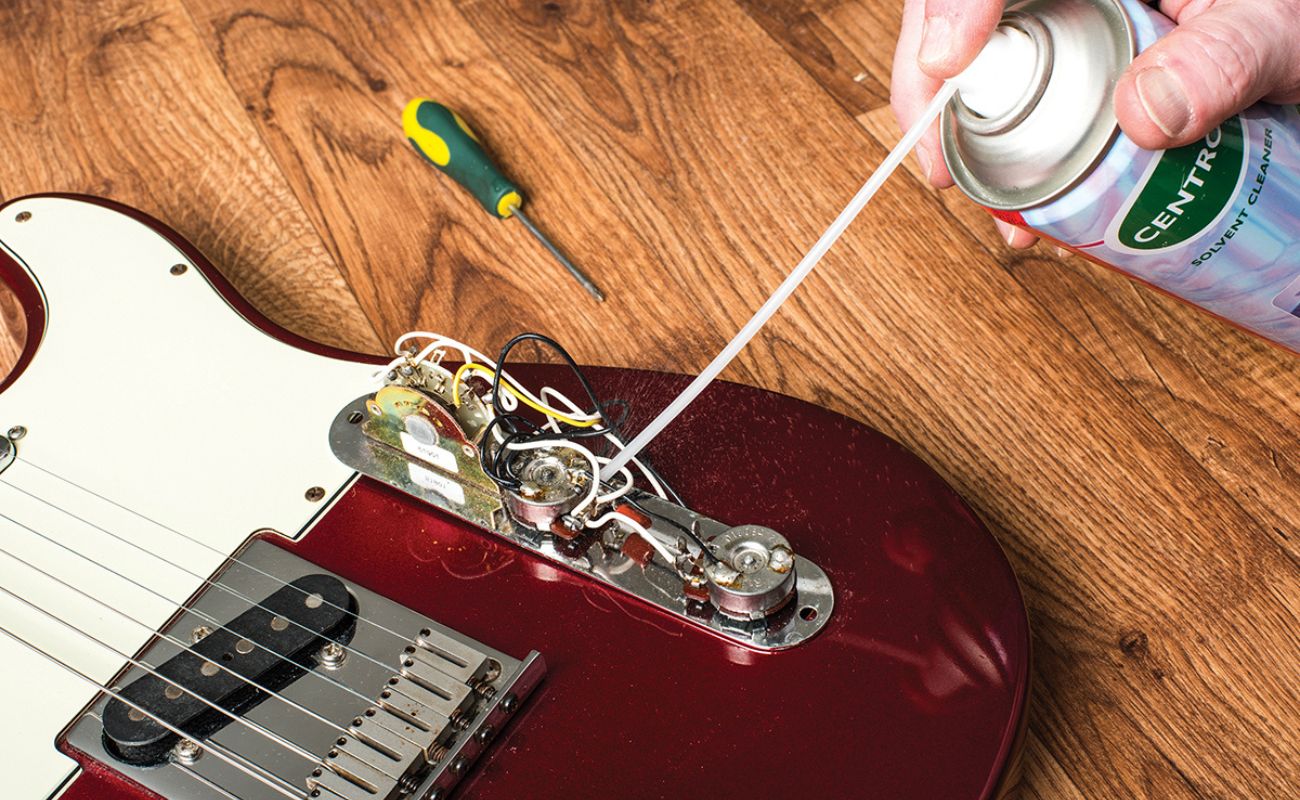

Home Maintenance
How Much Does Guitar Repair Cost
Modified: March 6, 2024
Find out the cost of guitar repair services for your home maintenance needs. Expert technicians provide high-quality repairs at affordable prices.
(Many of the links in this article redirect to a specific reviewed product. Your purchase of these products through affiliate links helps to generate commission for Storables.com, at no extra cost. Learn more)
Introduction
Guitars are not just musical instruments; they are cherished companions for musicians, personalizing their sound and style. However, like any other instrument, guitars require regular maintenance and occasional repairs to ensure they remain in optimum playing condition. From minor adjustments to major overhauls, guitar repairs can vary significantly in cost depending on a variety of factors.
In this article, we will explore the different factors that influence guitar repair costs and delve into some of the most common guitar repairs and their associated costs. Additionally, we will provide tips on finding an affordable and reliable guitar repair shop to save you both time and money.
Whether you’re a seasoned guitarist or a novice player, understanding the factors that impact guitar repair costs can help you make informed decisions about maintaining and repairing your instrument. So, let’s dive in and explore the world of guitar repair costs together.
Key Takeaways:
- Guitar repairs can vary in cost based on factors like the type of repair, extent of damage, and quality of replacement parts. It’s important to find a reputable and affordable repair shop for quality service.
- Regular maintenance and setup are essential for keeping your guitar in optimal condition. Investing in professional repairs and maintenance can prolong the life of your instrument and enhance your playing experience.
Read more: How Much Does Chimney Inspection Cost
Factors Influencing Guitar Repair Costs
When it comes to guitar repairs, several factors can influence the overall cost. Understanding these factors can help you get a clear idea of what to expect when seeking guitar repair services. Here are some key factors that can impact guitar repair costs:
1. Type of Repair: The type of repair needed is one of the most significant factors influencing the cost. Minor repairs such as a simple neck adjustment or replacing a string may be relatively inexpensive. On the other hand, complex repairs like replacing a fretboard or repairing a cracked body will likely be more costly.
2. Extent of Damage: The severity of the damage will also affect repair costs. Superficial cosmetic issues may be less expensive to fix compared to structural damage or electronics issues. The more extensive the damage, the more time and expertise required, which will drive up the cost.
3. Quality of Replacement Parts: If your guitar requires replacement parts, the quality and brand of those parts can influence the overall cost. Higher-quality parts may be more expensive but can offer improved performance and longevity. It’s important to consider your budget and the overall value you want to achieve in terms of sound and durability.
4. Labor and Skill Level: The experience and skill level of the guitar repair technician can impact the cost. Highly skilled technicians may charge a higher rate, but their expertise ensures a quality repair job. It’s worth investing in a reputable and experienced technician to avoid potential issues down the road.
5. Location: The cost of living and overhead expenses can vary depending on the location of the guitar repair shop. Repair costs may be higher in urban areas or regions with a higher cost of living. It’s advisable to research and compare prices between different shops in your area to find the best balance between quality and affordability.
6. Additional Services: Sometimes, guitar repair shops may offer additional services like setup, maintenance, or customization. These services, while optional, can add to the overall cost. However, they can also improve the playability and performance of your guitar, so it’s worth considering if your budget allows.
It’s important to note that the above factors are not exhaustive, and every guitar repair situation is unique. The best way to get an accurate estimate of the repair costs is to consult with a qualified guitar repair technician who can evaluate your specific needs.
Now that we’ve explored the factors that can influence guitar repair costs, let’s delve into some of the most common guitar repairs and their associated costs.
Common Guitar Repairs and Their Costs
Guitars, being intricate instruments, can require a range of repairs throughout their lifespan. Here are some of the most common guitar repairs and an estimate of their associated costs:
1. Neck Adjustment: Over time, the neck of a guitar may develop a slight bow or become too straight, affecting playability. A simple truss rod adjustment, which involves tweaking the neck’s curvature, can cost around $30 to $50.
2. Fretwork: Frets can wear down or become uneven, causing buzzing or intonation problems. A fret level and crown, which involves leveling the frets and reshaping their tops, can range from $70 to $150. If any frets need to be replaced, the cost can increase accordingly.
3. Pickup Replacement: If your guitar’s pickups are faulty or you want to upgrade to a different type, expect to pay around $50 to $150 per pickup. This cost can fluctuate based on the brand and complexity of the installation.
4. Bridge Repair/Replacement: Bridges can be prone to damage or wear, affecting both playability and intonation. Repairing a bridge might cost around $80 to $150, while replacing a bridge can range from $100 to $300, depending on the type of bridge and the complexity of the installation.
5. Electronic Repairs: Issues with electronics, such as loose connections or malfunctioning switches, may require soldering or component replacements. The cost can vary depending on the extent of the repair, but expect to pay around $50 to $100 for most electronic repairs.
6. Nut Replacement/Adjustment: A worn-out or poorly fitted nut can cause tuning and intonation problems. Replacing a nut typically costs approximately $50 to $100, while adjusting and filing an existing nut may cost less.
7. Tuning Machine Replacement: If your tuning machines are damaged or need an upgrade, the cost of replacement can range from $30 to $100 per set.
8. Finish Touch-ups/Refinishing: Cosmetic issues like scratches, dents, or worn finishes can be addressed through touch-ups or refinishing. The cost will depend on the extent of the damage and the type of finish, but expect to budget around $100 to $300 for most cosmetic repairs.
9. Crack Repairs: If your guitar develops cracks in its body or neck, it’s essential to get them repaired promptly. The cost will vary based on the size and severity of the crack, but repairs can range from $80 to $200 or more.
10. Setup and Maintenance: This includes adjusting the action, intonation, and truss rod, as well as cleaning and lubricating components. A basic setup typically costs around $50 to $100, while more extensive setups with additional adjustments can be in the range of $100 to $200.
It’s important to note that these prices are general estimates and can vary depending on your location, the specific repair shop, and the type and brand of your guitar. Additionally, complex repairs or unique situations may require a personalized quote from a guitar repair specialist.
Now that we have explored common guitar repairs and their associated costs, let’s discuss how to find an affordable and reliable guitar repair shop to ensure you receive quality service at a fair price.
Neck Adjustment
The neck of a guitar plays a crucial role in its playability and overall performance. Over time, the neck can develop issues such as a slight bow or excessive straightness, leading to discomfort while playing or affecting the guitar’s intonation. In such cases, a neck adjustment is necessary to restore the optimal curvature of the neck.
A neck adjustment, also known as a truss rod adjustment, involves tweaking the truss rod that runs through the neck of the guitar. This adjustment allows the player to correct the amount of relief or back-bow in the neck, ensuring that the strings are properly aligned with the fretboard.
The cost of a neck adjustment can vary depending on factors such as the complexity of the adjustment and the guitar repair shop’s location and expertise. On average, a simple neck adjustment may range from $30 to $50.
To perform a neck adjustment, a skilled guitar repair technician will typically:
1. Evaluate the neck’s curvature: The technician will examine the neck and assess whether there is too much bow or if it is too straight. They may use specialized tools like a straight edge or a feeler gauge to accurately measure the neck’s relief.
2. Loosen or tighten the truss rod: Based on the evaluation, the technician will make minor adjustments to the truss rod. By turning a specialized nut located at the headstock or inside the soundhole, they can modify the tension on the rod to achieve the desired level of neck relief.
3. Check and readjust the action and intonation: After the truss rod adjustment, the technician will check the guitar’s action (string height) and intonation to ensure they are within the proper range. They may make additional adjustments as necessary to optimize the playability and tuning accuracy of the instrument.
It’s important to note that a neck adjustment is not a one-time fix. The guitar’s neck can continuously change due to factors like humidity and string tension. Regular check-ups and adjustments may be needed to maintain the desired neck relief and playability.
If you notice issues with the neck of your guitar, such as buzzing strings, high action, or tuning instability, it’s crucial to consult with a reputable guitar repair professional. They will assess the neck’s condition and recommend the appropriate adjustment needed to optimize the guitar’s playability and performance.
Remember that the cost of a neck adjustment can vary between different guitar repair shops and locations. It’s essential to research and compare prices while also considering the reputation and expertise of the technician. Balancing quality service with affordability will ensure that you get the best value for your guitar repair needs.
A properly adjusted neck can significantly enhance your playing experience and allow you to enjoy your guitar to its fullest potential. So, if you’re experiencing neck-related issues, don’t hesitate to seek professional help and get your instrument back in optimal playing condition.
Fretwork
The frets on a guitar play a crucial role in achieving clean and accurate intonation. Over time, frets can become worn down, uneven, or develop sharp edges, leading to buzzing, fretting out, or poor playability. In such cases, a fretwork service is often necessary to restore the frets’ optimal condition and ensure a smooth and comfortable playing experience.
Fretwork involves leveling, crowning, and polishing the frets, ensuring they are properly shaped and aligned with the fretboard. This meticulous process requires precision and expertise to achieve optimal playability and intonation.
The cost of fretwork can vary depending on factors such as the extent of the work required, the number of frets involved, and the experience level of the guitar repair technician. On average, a fret level and crown service may range from $70 to $150.
When performing fretwork, a skilled technician will typically follow these steps:
1. Evaluation and assessment: The technician will thoroughly examine the condition of the frets, looking for signs of wear, unevenness, or damage. They may use specialized tools like fret rocker or straight edges to identify any high or low spots.
2. Leveling the frets: If the frets are uneven, the technician will use specialized leveling tools like leveling beams or files to remove material from the higher frets until a consistent level is achieved across the entire fretboard. This process ensures that each fret is the same height and allows for consistent string action.
3. Crowning the frets: After leveling, the technician will reshape the tops of the frets to create a rounded profile. This step helps to maintain proper string contact and minimizes buzzing or choking out of notes. Different crowning files or files with specially shaped edges may be used, depending on the desired crown profile.
4. Polishing the frets: Once the frets are leveled and crowned, the technician will carefully polish them to a smooth and shiny finish. This step not only enhances the guitar’s appearance but also improves the feel of the strings against the frets and reduces string bending friction.
During the fretwork process, the technician may also check and adjust the guitar’s intonation to ensure that each fret accurately produces the intended pitch.
It’s important to note that the cost of fretwork can vary depending on factors such as the complexity of the job, the number of frets involved, and the guitar repair shop’s rates. It’s advisable to consult with a reputable guitar repair professional to get an accurate estimate based on a thorough evaluation of your instrument.
Properly executed fretwork can significantly enhance the playability, intonation, and overall performance of your guitar. If you’re experiencing buzzing strings, fretting out, or uneven playability due to worn or damaged frets, investing in a fretwork service is crucial to restore your instrument’s optimal condition.
Always seek the services of a skilled guitar repair technician who has experience with fretwork and a reputation for delivering quality results. Their expertise and attention to detail will ensure that your frets are restored to their best possible condition, allowing you to enjoy your guitar to its fullest potential once again.
Read more: How Much Does It Cost To Replace A Chimney
Pickup Replacement
The pickups of a guitar play a fundamental role in shaping its tone and sound. Over time, you may find that your guitar’s pickups are no longer delivering the desired sound or that they have become faulty and need to be replaced. In such cases, a pickup replacement is a common solution to breathe new life into your instrument’s sonic capabilities.
Replacing guitar pickups involves removing the existing pickups and installing new ones that suit your desired tonal preferences. This process requires precision and knowledge of wiring and electronics to ensure proper installation and functionality.
The cost of pickup replacement can vary depending on factors such as the type and brand of pickups chosen, the complexity of the installation, and the experience level of the guitar repair technician. On average, you can expect to pay between $50 and $150 per pickup for the replacement cost.
When considering a pickup replacement, you have various options to choose from, including:
1. Single-coil pickups: These pickups are known for their bright and clear tones and are commonly found in genres like blues, country, and classic rock.
2. Humbucker pickups: Humbuckers offer a thicker and warmer tone and are favored in genres like rock, jazz, and metal. They provide reduced hum and increased output compared to single-coil pickups.
3. P90 pickups: P90 pickups offer a gritty and versatile tone, sitting somewhere between single-coil and humbucker pickups. They are adored for their raw and punchy sound.
4. Active pickups: Active pickups utilize a preamp powered by a battery, providing higher output levels and a more defined sound. These pickups are popular in genres that require high gain and heavy distortion, such as metal and hard rock.
To replace the pickups, a skilled guitar repair technician will typically follow these steps:
1. Evaluation and consultation: The technician will discuss your tonal preferences and help you choose the appropriate pickups for your desired sound. They may consider factors such as genre, playing style, and the guitar’s existing components.
2. Removal of existing pickups: The technician will carefully remove the existing pickups, ensuring the integrity of the guitar’s body and wiring.
3. Installation of new pickups: The new pickups will be installed into the guitar’s body, following proper wiring techniques and ensuring a secure fit. The technician will make any necessary adjustments to accommodate the size and specifications of the new pickups.
4. Testing and fine-tuning: Once the pickups are installed, the technician will test them to ensure proper functionality and make any necessary adjustments to optimize the sound and balance between the pickups.
It’s important to note that the cost of pickup replacement can vary based on factors such as the complexity of the installation and the brand and type of pickups selected. Higher-quality or specialized pickups may have a higher price tag.
To ensure the best results, it’s essential to consult with a knowledgeable guitar repair technician who can guide you in choosing the right pickups for your needs and install them properly. Their expertise will ensure that the new pickups are seamlessly integrated into your guitar, allowing you to achieve the desired tone and sound you are seeking.
Investing in a pickup replacement can breathe new life into your guitar and provide a fresh palette of tones to explore. Whether you’re looking for vintage warmth, modern power, or something in between, a pickup replacement can transform your instrument’s sound and elevate your playing experience.
Bridge Repair/Replacement
The bridge of a guitar is a critical component that affects its playability, intonation, and overall sound. Over time, the bridge can become worn, damaged, or misaligned, leading to issues such as string buzzing, poor intonation, or even structural instability. In such cases, a bridge repair or replacement may be necessary to restore the guitar’s optimal performance.
Bridge repairs can range from simple adjustments to more complex repairs, depending on the specific issue. In some cases, a repair may be sufficient to address the problem, while in others, a full replacement of the bridge may be required.
The cost of bridge repair or replacement can vary depending on factors such as the type of bridge, the extent of the damage or misalignment, and the experience level of the guitar repair technician. On average, repairing a bridge may cost around $80 to $150, while a complete bridge replacement can range from $100 to $300 or more.
When it comes to bridge issues, here are some common problems and their respective solutions:
1. Bridge re-gluing: If the bridge has started to lift or detach from the guitar’s body, re-gluing can be a possible solution. This involves removing the bridge, cleaning the contact surfaces, and reattaching it using specialized adhesive. The repair technician will ensure proper alignment and stability. The cost of bridge re-gluing can range from $80 to $150, depending on the complexity and time involved.
2. Bridge saddle replacement: The saddle, which is responsible for setting the string height and intonation, can become worn or damaged over time. Replacing the saddle can improve playability and intonation. The cost of a saddle replacement can vary depending on the material and intricacy of the bridge design, ranging from $50 to $150.
3. Bridge pin replacement: Bridge pins, which hold the strings in place at the bridge, can wear down or break. Replacing these pins can help with maintaining proper string tension and stability. The cost for a set of bridge pins can range from $10 to $40, depending on the material and design.
4. Complete bridge replacement: In some cases, the damage to the bridge may be extensive, or you may want to upgrade to a different type of bridge for tonal or aesthetic reasons. Complete bridge replacement involves removing the old bridge and installing a new one. The cost can vary depending on factors such as the type and complexity of the bridge, ranging from $100 to $300 or more.
It’s important to have a skilled guitar repair technician assess the bridge issue to determine the best course of action. They will carefully evaluate the damage, discuss the available options with you, and provide an estimate of the repair or replacement cost.
Bridge repairs and replacements require meticulous work to ensure proper alignment, stability, and functionality. It is highly recommended to seek the services of a reputable guitar repair technician who has experience in bridge repairs and replacements.
By addressing bridge issues promptly and investing in professional repairs or replacements, you can ensure that your guitar maintains its optimal performance, playability, and tonal qualities. A well-functioning bridge will enhance your playing experience and allow you to enjoy the full potential of your instrument.
Electronic Repairs
The electronic components of a guitar, including pickups, switches, and wiring, play a crucial role in shaping its sound and tone. Over time, these components can develop issues such as loose connections, malfunctioning switches, or static noise, affecting the overall performance of the instrument. In such cases, electronic repairs are necessary to restore the guitar’s optimal functionality.
Electronic repairs involve diagnosing and addressing issues with the guitar’s wiring, soldering, or faulty components. These repairs require expertise in guitar electronics and proper troubleshooting techniques to identify and rectify the problem.
The cost of electronic repairs can vary depending on factors such as the complexity of the repair, the specific issue, and the experience level of the guitar repair technician. On average, you can expect to pay around $50 to $100 for most electronic repairs.
Here are some common electronic repairs and their associated costs:
1. Switch or potentiometer replacement: If your guitar’s switches or potentiometers (volume or tone controls) are malfunctioning or producing scratchy sounds, they may need to be replaced. The cost for each replacement can range from $20 to $50, depending on the quality and type of component.
2. Jack replacement: If the output jack of your guitar is loose, causing intermittent sound or no signal at all, it may need to be replaced. The cost for a jack replacement can range from $20 to $50, depending on the type and quality of the jack.
3. Soldering and wiring repair: Loose or broken connections in the guitar’s wiring can result in buzzing, intermittent signal, or loss of functionality. Repairing these issues typically involves soldering the loose or broken connections. The cost for soldering and wiring repair can range from $30 to $70, depending on the complexity and time required.
4. Component replacements: In some cases, specific electronic components like capacitors or resistors may need to be replaced to rectify issues with the guitar’s sound or tone. The cost for component replacements can vary depending on the specific component and its quality, typically ranging from $5 to $30 per component.
It’s important to note that the cost of electronic repairs may vary depending on the extent of the issue, the complexity of the repair, and the guitar repair shop’s rates. Additionally, if multiple electronic issues are present, the cost may increase accordingly.
To ensure the best results, it’s crucial to consult with a skilled guitar repair technician who specializes in guitar electronics. They will diagnose the issue accurately, guide you through the available repair options, and provide an estimate based on the specific needs of your instrument.
Investing in electronic repairs can greatly improve the functionality and sound quality of your guitar. Whether it’s rectifying buzzing sounds, addressing intermittent connections, or restoring full functionality to your guitar’s electronics, professional repairs ensure that your instrument performs at its best.
Remember, electronics repairs require knowledge and experience in guitar electronics. It’s advisable to seek the services of a reputable guitar repair technician to ensure that your electronic issues are properly diagnosed and repaired, allowing you to enjoy your guitar’s full potential.
The cost of guitar repair can vary depending on the type of repair needed. Simple repairs like string replacement or tuning may cost around $20-$50, while more complex repairs like fretwork or electronics may cost $50-$150 or more. It’s best to get a quote from a professional guitar repair technician.
Nut Replacement/Adjustment
The nut of a guitar plays a crucial role in setting the height and spacing of the strings, determining their action and playability. Over time, the nut can wear down, develop cracks, or become improperly fitted, resulting in issues such as string buzz, intonation problems, or difficulty in staying in tune. In such cases, a nut replacement or adjustment is necessary to ensure optimal string action and overall performance.
Nut replacement or adjustment involves carefully removing the old nut and installing a new one or making modifications to the existing nut. This process requires precision and expertise to ensure proper string spacing, height, and alignment.
The cost of nut replacement or adjustment can vary depending on factors such as the type of nut material, the complexity of the job, and the skill level of the guitar repair technician. On average, you can expect to pay around $50 to $100 for a nut replacement or adjustment.
Here are some common nut-related repairs and their associated costs:
1. Nut replacement: If the nut is cracked or worn beyond repair, it will need to be replaced. The cost for a nut replacement can vary depending on factors such as the material and intricacy of the nut. For a standard bone or synthetic material nut, you can expect to pay around $50 to $100.
2. Nut adjustment: Sometimes, the existing nut may not be properly set, causing issues such as string buzz or high action. In such cases, a nut adjustment may be sufficient. This involves filing or sanding down the nut to achieve the proper string height and spacing. The cost of a nut adjustment can vary depending on the extent of the work required, typically ranging from $30 to $50.
It’s important to note that nut replacements and adjustments require careful attention to detail and expertise in guitar setup and maintenance. It is highly recommended to seek the services of a skilled guitar repair technician who specializes in nut work to ensure that it is done correctly.
A properly fitted and adjusted nut can greatly improve the playability and tuning stability of your guitar. It ensures that the strings have the correct height and spacing, allowing for comfortable fretting and accurate intonation. Additionally, a high-quality nut material, such as bone or synthetic materials, can enhance the guitar’s sustain and overall tone.
When considering a nut replacement or adjustment, it’s important to consult with a reputable guitar repair technician who can assess your guitar’s specific needs. They will guide you through the available options, taking into consideration factors such as playing style, string gauge, and personal preferences. This personalized approach ensures that the nut replacement or adjustment is tailored to your instrument and playing requirements.
Investing in a nut replacement or adjustment is an important aspect of maintaining your guitar’s playability and performance. By addressing issues with the nut, you can ensure that your instrument functions at its best and allows you to fully enjoy your playing experience.
Read more: How Much Does It Cost To Clean A Chimney
Tuning Machine Replacement
Tuning machines, also known as tuners or machine heads, are essential components of a guitar that allow players to adjust the tension and pitch of the strings, ensuring accurate tuning. Over time, tuning machines can become worn, corroded, or develop issues such as slipping or stiffness. In such cases, tuning machine replacement may be necessary to maintain precise and stable tuning.
Tuning machine replacement involves removing the old tuners and installing new ones that match the style and specifications of your guitar. This process requires careful consideration of factors such as compatibility, functionality, and aesthetic appeal.
The cost of tuning machine replacement can vary depending on factors such as the type of tuners, the brand, the quality, and the complexity of the installation. On average, you can expect to pay around $30 to $100 per set of tuning machine replacements.
Here are some common scenarios for tuning machine replacement and their associated costs:
1. Standard Replacement: If your current tuners are worn or starting to fail, a standard replacement with a similar style and quality can cost around $30 to $60 per set.
2. Upgrade to Higher-quality Tuners: If you’re looking to improve the tuning stability, precision, and overall performance of your guitar, you may choose to upgrade to higher-quality tuners. Upgraded tuners can range in price from $80 to $200 or more, depending on the brand and the features they offer.
3. Vintage or Custom Replacements: In some cases, guitars with unique requirements or vintage instruments may require specialized tuning machine replacements. These replacements can involve sourcing rare or specific tuners, which can result in higher costs that vary depending on availability and rarity.
To replace tuning machines, a skilled guitar repair technician will typically follow these steps:
1. Evaluation and consultation: The technician will assess the condition of your current tuning machines and discuss with you the available replacement options. They will take into consideration factors such as compatibility, functionality, and your personal preferences.
2. Removal of old tuners: The technician will carefully remove the old tuning machines, ensuring minimal damage to the headstock or existing finish.
3. Installation of new tuners: The new tuning machines will be installed, ensuring a proper fit and alignment. The technician will make any necessary adjustments to the screws, bushings, or washers to ensure smooth operation and proper string tension.
4. Fine-tuning and testing: Once the new tuners are installed, the technician will test the tuning stability and make any adjustments as needed. This step ensures that the tuning machines function correctly and allow for precise tuning.
It’s important to remember that tuners can significantly impact the tuning stability, playability, and overall functionality of your guitar. Investing in high-quality tuning machines and professional installation can greatly improve your playing experience and eliminate the frustration of constant retuning.
When considering tuning machine replacement, it’s advisable to seek the services of a reputable guitar repair technician. They can guide you through the available options, assist with selecting the appropriate tuners for your guitar, and ensure proper installation for optimal performance.
By replacing worn or faulty tuning machines, you can restore accurate and stable tuning to your guitar, allowing you to focus on your playing without the worry of constant retuning.
Finish Touch-ups/Refinishing
The finish of a guitar not only adds to its aesthetic appeal but also provides protection to the wood and enhances its resonance. However, over time, the finish can develop scratches, dents, or wear due to regular use and exposure to environmental factors. In such cases, finish touch-ups or refinishing may be necessary to restore the guitar’s appearance and protect the wood.
Finish touch-ups involve addressing minor cosmetic issues such as small scratches, scuffs, or chips in the finish. This process typically includes cleaning, polishing, and applying color-matching touch-up lacquer to blend the affected areas with the surrounding finish. The cost for finish touch-ups can range from $50 to $200, depending on the extent of the damage and the complexity of the touch-up work.
Refinishing, on the other hand, involves completely removing the existing finish and applying a new one. This is a more intensive process and is typically required for guitars with extensive wear, deep scratches, or if the player desires a completely new look. The cost for refinishing a guitar can vary significantly depending on factors such as the size of the instrument, the type of finish, any additional custom work, and the expertise of the guitar repair technician. On average, refinishing may cost anywhere from $200 to $500 or more.
It’s important to note that refinishing a guitar is a significant decision that can greatly impact its value and originality. Therefore, it’s advisable to consult with a reputable guitar repair technician or luthier who can provide guidance and advice on whether refinishing is the best option for your instrument.
When performing finish touch-ups or refinishing, a skilled technician will typically follow these steps:
1. Evaluation and consultation: The technician will assess the condition of the guitar’s finish, discuss your desired outcome, and advise on the best approach for repair or refinishing.
2. Preparation: If performing a touch-up, the technician will clean the affected area, ensuring that it is free from any dirt, debris, or previous treatment. If refinishing, the existing finish will be carefully removed through sanding or chemical stripping.
3. Color matching: For touch-ups, the technician will mix and apply color-matching lacquer to blend seamlessly with the surrounding finish. Multiple layers may be applied to achieve the desired depth and opacity. For refinishing, the technician will apply a new finish of your choice, such as nitrocellulose lacquer, polyurethane, or other appropriate finishes.
4. Buffing and polishing: Once the touch-up or refinishing process is complete, the technician will carefully buff and polish the finish to restore its shine and smoothness.
It’s important to understand that finish touch-ups and refinishing require specialized skills and equipment. It’s recommended to work with an experienced guitar repair technician who has expertise in finish restoration and can provide you with the best results.
Remember, the primary goal of finish touch-ups or refinishing is to enhance the appearance and protect the wood of your guitar. Whether you opt for a minor touch-up to address cosmetic blemishes or a complete refinishing to give your guitar a fresh new look, the result will be an instrument that looks and feels revived, ready to inspire you in your musical journey.
Crack Repairs
Cracks can be a concerning issue for any guitarist, as they can affect the structural integrity, playability, and overall sound of a guitar. Cracks can occur due to various factors such as changes in humidity, impact, or age-related stress. It’s important to address cracks promptly to prevent further damage and maintain the instrument’s optimal condition.
Repairing cracks in a guitar requires the expertise of a skilled guitar repair technician or luthier who can assess the severity of the cracks and determine the appropriate repair method. The cost of crack repairs can vary depending on factors such as the size and location of the crack, the type of wood, and the complexity of the repair.
Here are some common crack repair scenarios and their associated costs:
1. Small, superficial cracks: Minor cracks that do not affect the structural integrity of the guitar can often be repaired with minimal intervention. These repairs typically involve applying specialized adhesive to seal the crack and prevent it from spreading further. The cost for repairing small, superficial cracks can range from $80 to $150.
2. Top or back crack repairs: Cracks in the top or back of the guitar require more extensive repairs, as they can impact both the structural integrity and the instrument’s tonal qualities. These repairs may involve cleating (installing reinforcement patches), gluing, and refinishing the affected area. The cost for repairing top or back cracks can range from $150 to $300 or more, depending on the complexity of the repair.
3. Neck crack repairs: Cracks in the neck of a guitar can be particularly concerning, as they can affect the instrument’s stability and playability. Neck crack repairs may involve reinforcing the crack with specialized techniques such as splines (inserting thin strips of wood) or installing carbon fiber rods. The cost for neck crack repairs can range from $200 to $400, depending on the severity and complexity of the repair.
It’s important to note that the cost for crack repairs can vary depending on the specific needs of the guitar and the expertise and experience of the guitar repair technician. It’s advisable to consult with a reputable professional who specializes in crack repairs to ensure the best possible outcome.
When performing crack repairs, a skilled technician will typically follow these steps:
1. Evaluation and assessment: The technician will carefully examine the crack, assessing its size, location, and potential causes. They will determine the appropriate repair method based on the specific needs of the instrument.
2. Crack preparation: The technician will clean and prepare the crack by removing any debris or loose pieces of wood. This step ensures a clean and stable base for the repair.
3. Crack repair: The technician will use specialized techniques and adhesives to address the crack. This may include reinforcing the crack with cleats, splines, or carbon fiber rods. The goal is to stabilize the crack and prevent it from expanding further.
4. Finishing and touch-up: Once the crack repair is complete, the technician may perform any necessary touch-ups to the finish or refinish the affected area. This step ensures a seamless integration of the repair with the overall aesthetics of the guitar.
It’s important to understand that crack repairs are delicate procedures that require expert knowledge and experience. It’s advisable to seek the services of a reputable guitar repair technician who specializes in crack repairs to ensure the best possible outcome for your instrument.
By addressing cracks promptly and seeking professional repairs, you can prevent further damage to your guitar and ensure its longevity. A well-repaired guitar will not only retain its structural integrity but also continue to produce the best tonal qualities, allowing you to enjoy your instrument for years to come.
Setup and Maintenance
Regular setup and maintenance are essential for keeping your guitar in optimal playing condition. A guitar that is properly set up will have comfortable action, accurate intonation, and reliable tuning stability. Additionally, routine maintenance helps prevent issues such as excessive wear, fret buzz, and electronic problems. Let’s dive into the world of guitar setup and maintenance.
Setup and maintenance services typically include several key aspects:
1. Neck Adjustment: The technician will assess the curvature of the neck and make any necessary truss rod adjustments to achieve the optimal amount of relief. This step ensures that the strings are properly aligned with the fretboard and facilitates comfortable playing.
2. Action and Intonation: The action refers to the height of the strings above the fretboard, while intonation refers to the accuracy of the guitar’s pitches across the fretboard. The technician will adjust the saddle height and length to optimize both the action and intonation, ensuring precise and even tone across all frets.
3. String Replacement: Regularly changing your guitar strings is crucial for maintaining good tone and playability. The technician will remove the old strings and replace them with new ones of your preferred gauge and type. This process also includes cleaning and conditioning the fretboard.
4. Fretwork: If necessary, the technician will perform fret leveling, crowning, and polishing to ensure that the frets are properly aligned, smooth, and free from buzzing or intonation issues. This step helps to maintain excellent playability and accurate intonation.
5. Electronics Cleaning and Inspection: The technician will clean the guitar’s electronic components, including the pickups, switches, and potentiometers. They will inspect the wiring for any loose connections or signs of wear, and address any necessary repairs.
6. Nut Adjustment: The technician will examine the nut and make any necessary adjustments to ensure proper string height and spacing. This step helps prevent buzzing and ensures smooth string movement at the nut.
7. Cleaning and Conditioning: The technician will clean the guitar’s body, fretboard, and hardware, removing dirt, grime, and fingerprints. They may also apply a fine polish or conditioner to preserve and protect the guitar’s finish and wood.
8. Overall Inspection: The technician will conduct a thorough inspection of the guitar, examining the hardware, structural integrity, and any other aspects that may affect playability or performance. They will address any issues discovered during the inspection and recommend further repairs or adjustments if needed.
The cost of a guitar setup and maintenance service can vary depending on factors such as the complexity of the setup, the type of guitar, and the experience of the technician. On average, a basic setup and maintenance service can range from $50 to $100. Additional repairs or specialized adjustments may incur additional costs.
Regular setup and maintenance are vital for keeping your guitar playing and sounding its best. It’s recommended to have your guitar professionally set up and maintained at least once a year, more frequently if you’re a heavy player or if you live in an area with significant humidity fluctuations.
By investing in regular setup and maintenance, you’ll not only prolong the lifespan of your instrument but also enhance your playing experience. A properly set up and well-maintained guitar will inspire you to reach new musical heights while ensuring that your instrument remains in prime condition for years to come.
Remember, it’s always advisable to consult with a skilled guitar repair technician or luthier who can provide expert guidance and perform the necessary setup and maintenance tasks for your specific guitar type and playing preferences.
Read more: How Much Does It Cost To Tuckpoint A Chimney
How to Find an Affordable and Reliable Guitar Repair Shop
When it comes to finding a guitar repair shop that is both affordable and reliable, there are several factors to consider. Here are some tips to help you find the right guitar repair shop for your needs:
1. Ask for Recommendations: Seek recommendations from fellow musicians, friends, or local music stores. Hearing about others’ experiences can provide insights into the quality and affordability of different repair shops in your area.
2. Research and Read Reviews: Conduct online research to find guitar repair shops near you. Look for reviews and testimonials from previous customers to gauge their satisfaction with the service. This can give you an idea of the shop’s reputation and reliability.
3. Check for Experience and Expertise: Look for a shop or technician with a good level of experience and expertise in guitar repairs. A well-established shop with knowledgeable technicians will have the skills to handle a wide range of repair needs effectively.
4. Inquire about Pricing: Contact the repair shops you are considering and inquire about their pricing structure. Some shops may have a flat rate for specific services, while others may provide individual estimates based on the repair required. Be sure to get a clear understanding of the costs involved to ensure affordability.
5. Visit the Shop: Consider visiting the shop in person, if possible. This will give you an opportunity to see the environment, talk to the technicians, and get a feel for their level of professionalism and customer service. A clean and organized shop is usually indicative of a reliable establishment.
6. Ask about Warranties and Guarantees: Inquire about the warranties or guarantees offered by the repair shop. A reputable shop should stand behind their work and offer some form of warranty on the repairs performed. This provides peace of mind and ensures that you are protected should any issues arise.
7. Assess Communication and Customer Service: Pay attention to how the shop communicates with you. A reliable shop will be responsive, attentive to your concerns, and provide clear explanations of the repairs needed. Friendly and helpful customer service is an important aspect of a trustworthy guitar repair shop.
8. Evaluate Turnaround Time: Inquire about the estimated turnaround time for the repairs. While it’s important to have your guitar repaired efficiently, quick turnaround times should not compromise the quality of the work. A balance between speed and quality is crucial.
9. Consider Specializations: If your guitar requires specialized repairs or modifications, such as vintage or custom instruments, look for a shop that has experience and expertise in those specific areas. Specialized knowledge can ensure that your guitar is in capable hands.
Remember, finding an affordable and reliable guitar repair shop is essential for the longevity and playing experience of your instrument. Taking the time to research and ask for recommendations will help you make an informed decision.
By finding a shop that offers a balance of affordability, expertise, quality workmanship, and excellent customer service, you can trust that your guitar is in good hands and will be brought back to its optimal condition.
Conclusion
Maintaining and repairing your guitar is crucial to ensuring its longevity, playability, and overall performance. A well-maintained instrument will inspire you to create beautiful music and elevate your playing experience. Throughout this article, we have explored various factors influencing guitar repair costs and discussed common guitar repairs and their associated costs. We have also provided tips on finding an affordable and reliable guitar repair shop.
From neck adjustments and fretwork to pickup replacements and crack repairs, each repair plays a vital role in restoring and enhancing your guitar’s condition. Whether you’re a seasoned guitarist or a beginner, understanding these repairs and their costs empowers you to make informed decisions about the care and maintenance of your instrument.
When it comes to finding a guitar repair shop, take the time to research and seek recommendations. Look for experienced technicians who specialize in guitar repairs, offer warranties or guarantees on their work, and provide reliable and friendly customer service. Communication and affordability should also be key considerations.
Remember, the cost of a repair should not be the sole determining factor. Prioritize quality and expertise to ensure that your guitar receives the attention it deserves. A reputable repair shop will not only fix any issues your guitar has but also provide guidance on proper maintenance, ultimately prolonging the life of your instrument.
Regular setup and maintenance are essential for keeping your guitar in optimal playing condition. By investing in periodic setups, string replacements, and routine maintenance, you can avoid potential issues and enjoy consistently great sound and playability.
Lastly, remember that your guitar is more than just a musical instrument; it’s a companion that resonates with your emotions and creativity. Taking care of it will reward you with years of joyful playing and allow you to create beautiful music.
So, embrace the responsibility of maintaining and repairing your guitar with care. Connect with a trusted guitar repair shop, give your instrument the attention it needs, and let your guitar continue to be the soulful conduit of your musical journey.
Frequently Asked Questions about How Much Does Guitar Repair Cost
Was this page helpful?
At Storables.com, we guarantee accurate and reliable information. Our content, validated by Expert Board Contributors, is crafted following stringent Editorial Policies. We're committed to providing you with well-researched, expert-backed insights for all your informational needs.
